Real-Time Strategy – the genre that needs more minerals
The history of rise and fall of the RTS genre is an interesting one, and in a way, it resembles that of Arena shooters. The RTS genre rose to prominence around the same time, it gathered a large and enthusiastic esports community, it helped lay the groundwork for the future of esports and then slowly but surely was replaced by a genre derived from itself, one that was a little easier to play, and was team-based.
The difference is, arena shooters got nearly destroyed by team tactical FPS (Counter-Strike, Call of Duty), while MOBAs did grow extremely large, but the RTS held up a lot better, and it’s still a relevant type of competitive games to this date. Let’s quickly review the golden era of RTS, and try to take a glimpse into the future.
Description
Real-time strategy (as opposed to Turn-based strategy, TBS) is a genre where players need a wide and balanced skillset: good tactical thinking, ability to play mind games, mechanical skills and multitasking to execute various strategies quickly and confidently. The best representatives of this genre get the balance between strategy and execution just right, and as a result it’s equally important what you choose to do in a match, and how well you do it. It’s like a mix of chess and table tennis.
From a practical point of view the gameplay looks like this: players, or two opposing teams of players, build bases using worker units, and harvest resources in order to keep expanding their bases and produce combat units, with which they fight their opponent for map control, and ultimately try to destroy the enemy base.
Dune II
Dune II, released by Westwood Studios in 1992 on PC (followed by AMIGA and Genesis releases in 93), was the first game labeled as “real-time strategy”. Some games like Herzog Zwei (1989) or even older Utopia (1981) incorporated some elements of RTS, but Dune II was the first game to provide this recognizable combination of gameplay elements: tactical combat between groups of units, base building, resource gathering, unit production, consistent art and aesthetics.
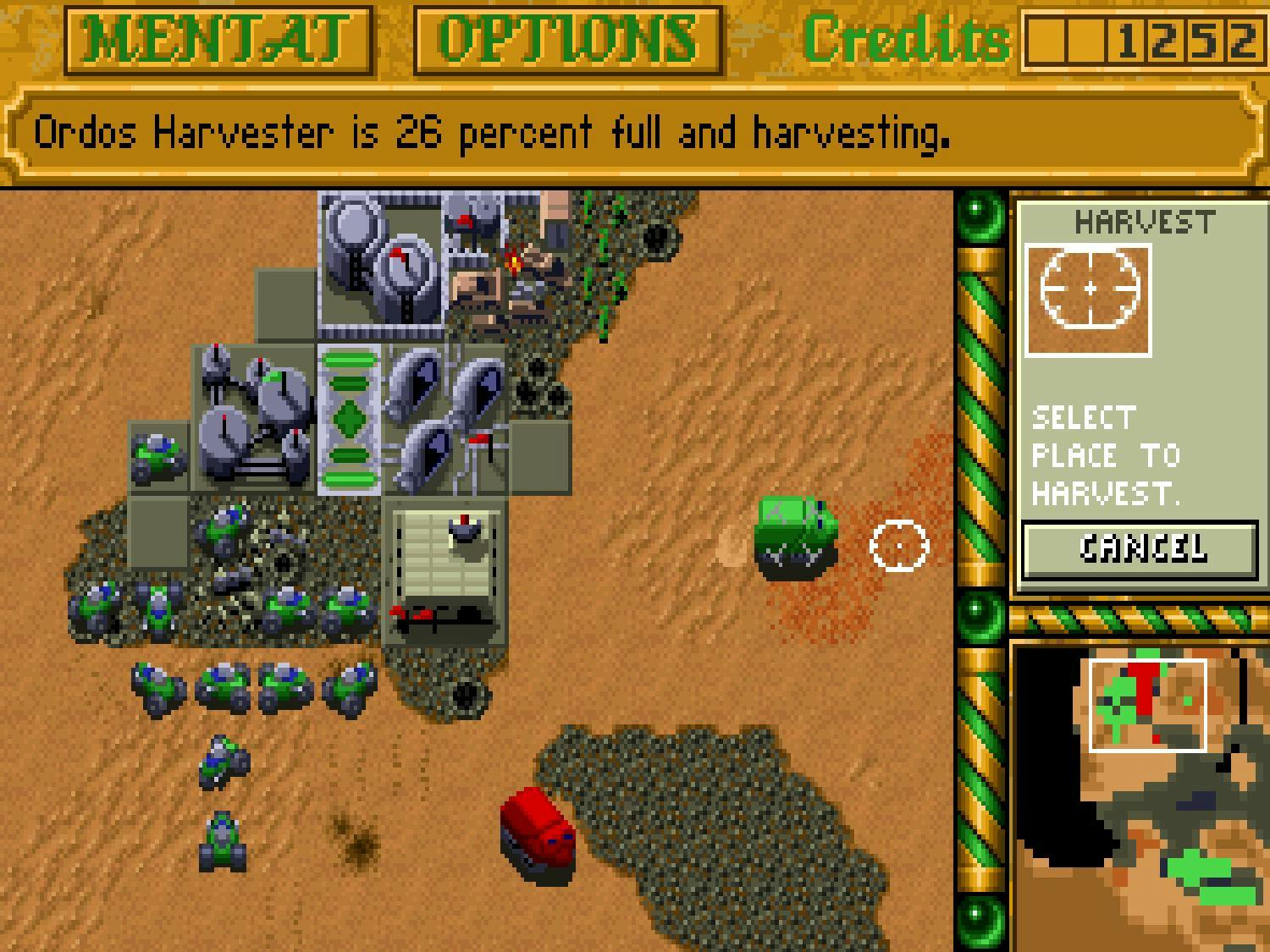
Source: Wikipedia
After that, games like Warcraft: Orcs & Humans, Command & Conquer, Command and Conquer: Red Alert, and Warcraft II: Tides of Darkness were released in the mid-nineties.
Some early RTS games had local multiplayer support, but one company made multiplayer RTS truly mainstream, paving the way for the future esports scene. On December 31, 1996, Blizzard launched a service called Battle.net for their aRPG game Diablo.
StarCraft
The first RTS in which it was implemented was StarCraft, released for Windows on March 31, 1998. It was followed by Warcraft II: Battle.net Edition is a Battle. net-enabled version of Warcraft II: Tides of Darkness, with the expansion Warcraft II: Beyond the Dark Portal built in. It was released on October 8, 1999.

Source: Blizzard Entertainment
Battle.net was the first online gaming service that was incorporated directly into the games, in contrast to external interfaces that were used by other online gaming services at the time. It was a fairly basic service, with a simple interface, but it had all the core functionality to support a gaming community: a system of chat channels, clans, friend list, custom games and, more importantly, ranked ladders, which enabled players to play their favorite RTS games competitively.
Age of Empire
Age of Empire, another game series that would secure a place among the best representatives of the RTS genre also was released around that time in 1997. It was a more realistic game compared to StarCraft and Warcraft, based on sci-fi and fantasy fiction, respectively.
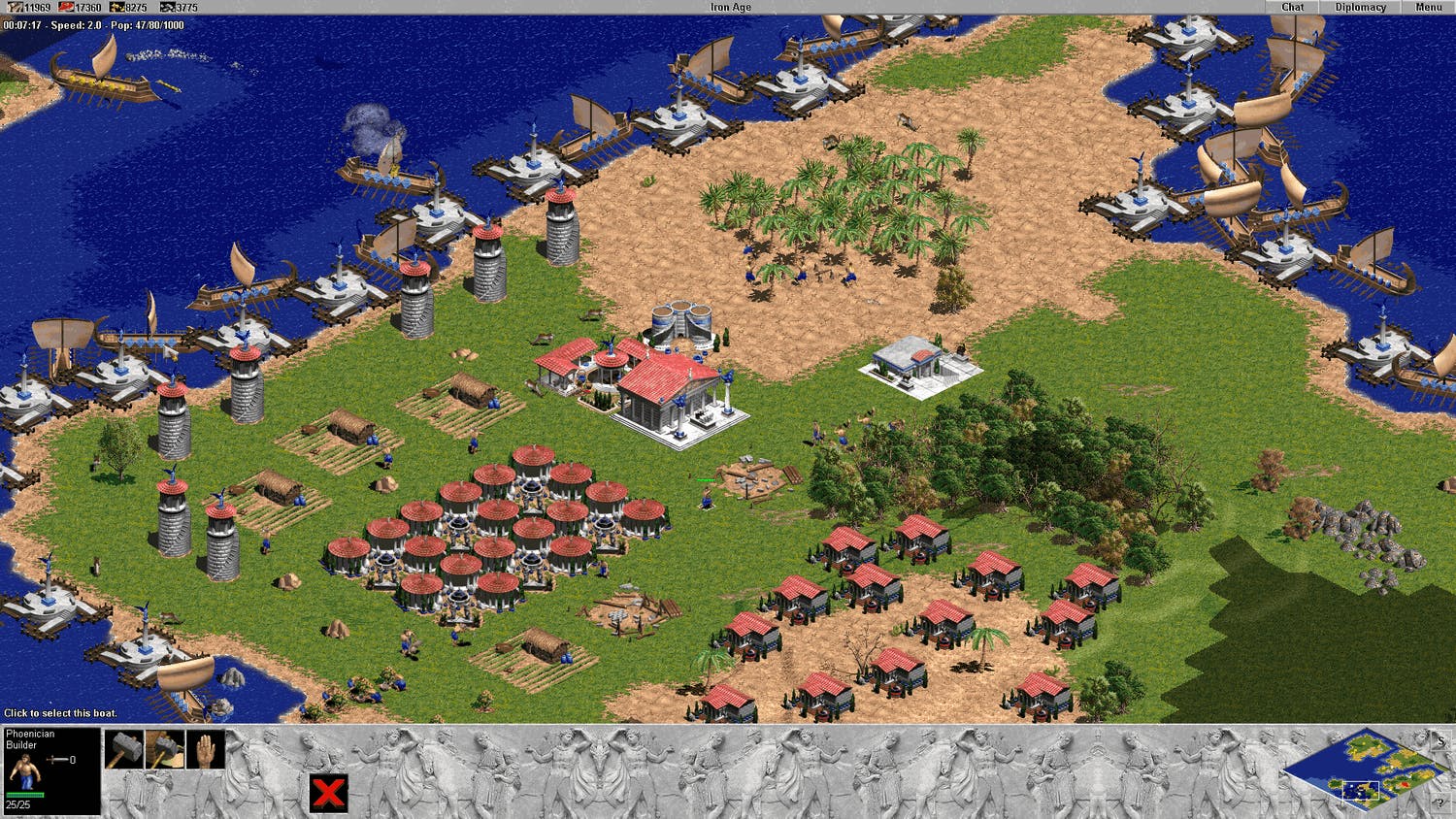
Source: The Verge
Command and Conquer
Another game series that would be impossible to omit when talking about RTS is Command and Conquer from Westwood studios (the developers of Dune II). The series is split into Tiberian Sun (a more serious and futuristic setting) and Red Alert (more light-hearted, borderline parody setting). Another game that became a cult classic was Generals (2003). These franchises were quite popular, and objectively had great art and gameplay, but saw a lot less competitive play than the Blizzard RTS games.
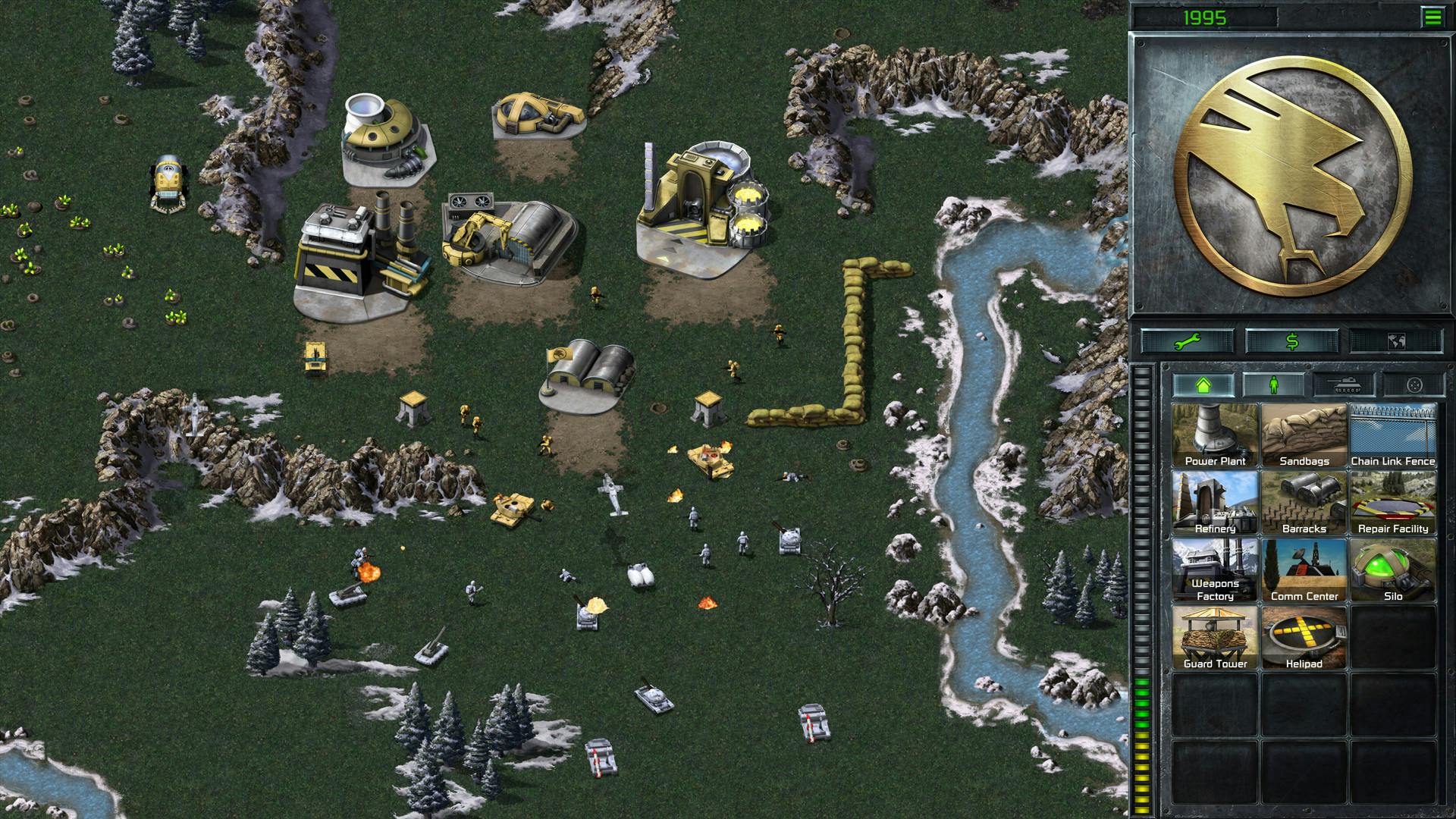
Source: Steam
Sadly, in 2010, when Command & Conquer 4: Tiberian Twilight was released, the developers took innovation a little too far and in the wrong direction. The game got a very mixed reception, and since then there hasn’t been anything new from them, but a remastered collection of their older games, as well as a mobile game.
In the context of competitive esports, two Blizzard entertainment games truly stand out: StarCraft (Brood War), followed by its sequel StarCraft II and Warcraft 3 (The Frozen Throne).
Starcraft: Brood War
Starcraft: Brood War was the first RTS game to have a professional competition circuit and televised professional leagues, and this all happened in South Korea not in 2010 or later, but as early as 2000, when Korea Esports Association (more known as KeSPA) was formed. KeSPA regulated esports broadcasting by channels, such as the two major StarCraft channels, OnGameNet and MBCGame, and later, one of the first online streaming services, GOMtv.
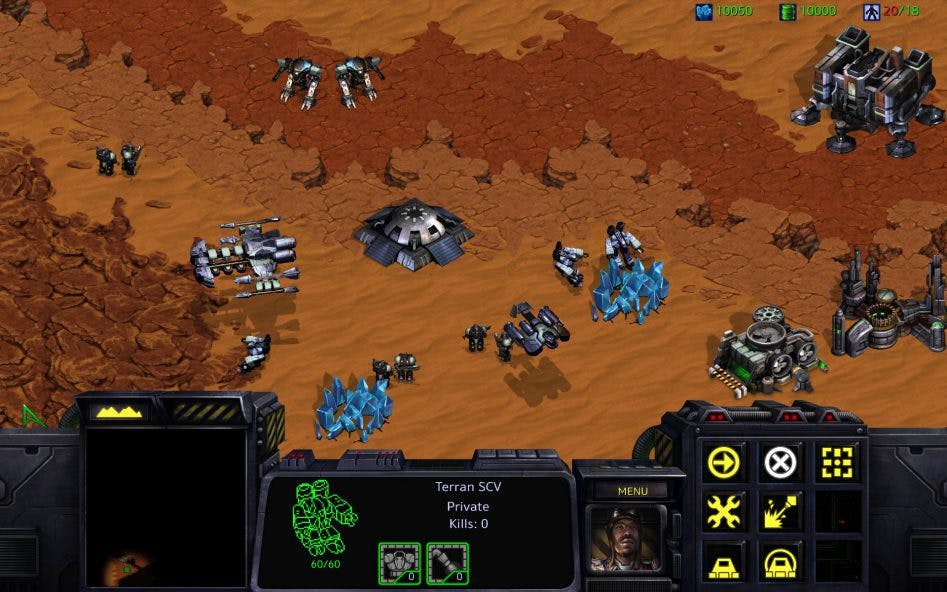
Starcraft players became celebrities in South Korea. They had tons of fans, official contracts and salaries, coaches, uniforms. They participated in TV shows and commercials long before any esports in North America or Europe would achieve the same level of recognition. One of the teams was owned by the Korean Air Force, the rest were sponsored by giant corporations.
The Brood War pro scene was so strong, that even its successful sequel Starcraft II failed to cannibalize it initially, and the transition took several years. However, Starcraft Brood War never even disappeared completely, and KSL had run a professional league till it was discontinued in 2020 using the Remastered edition.
Warcraft 3 Reign of Chaos
Warcraft 3 Reign of Chaos, released in 2002, and followed by a highly-acclaimed add-on The Frozen Throne the following year, did not harm the blooming StarCraft scene either, because it was a different kind of game. It shifted the focus from multitasking and macro-play to micromanagement of units. Macro and micro management are two key aspects of real-time strategy games. While good macro helps a player collect more resources and build more units, good micro helps a player win skirmishes against equal numbers and types of opponent units or win even when outnumbered.
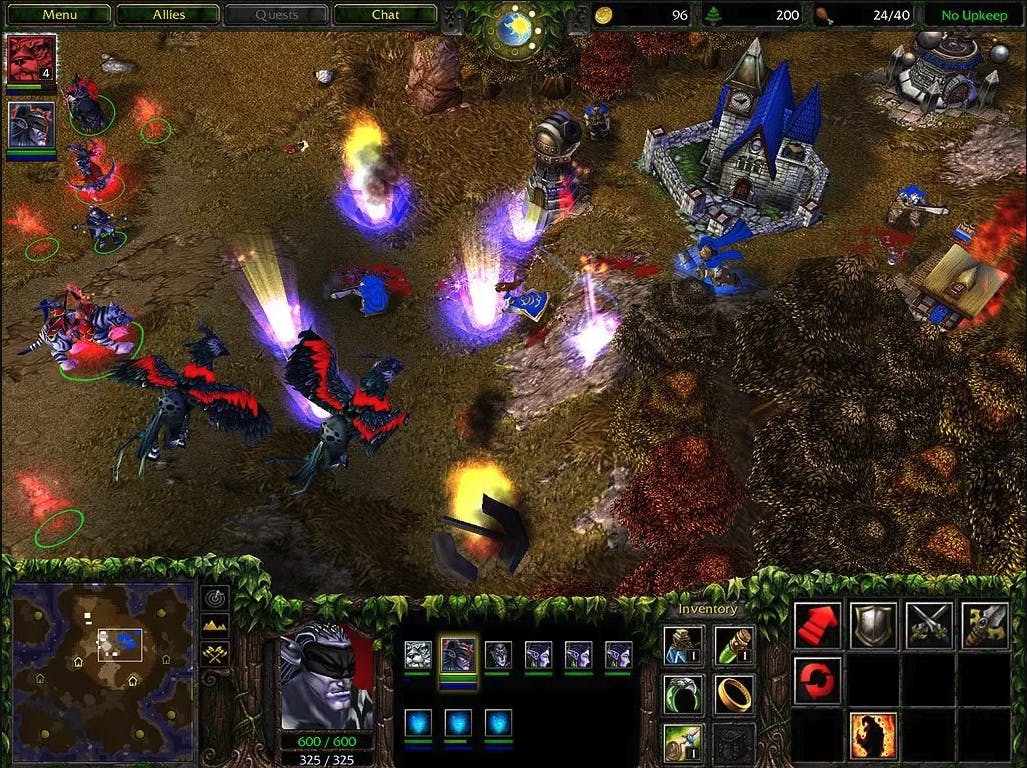
However, more importantly, the game introduced hero units, and it was its biggest unique trait compared to all other competitive RTS games. Not only did it revolutionize the RTS genre and made gameplay more dynamic and varied, it also laid the foundation for the MOBA genre, which, ironically, would start to outperform RTS at an alarming rate. Custom games, such as Dota, would keep players in Warcraft, in a sense that they’d keep buying the game and would spend tons of hours online, but they would gradually stop playing Warcraft itself, and by 2008 Warcraft was used as nothing but a Dota launcher by most of the player base.
Starcraft II Wings of Liberty
Starcraft II Wings of Liberty (2010) did really well, it was a big hit and its competitive scene flourished, but it strictly followed the classic RTS formula, and didn’t innovate much. Even its two expansions, Heart of the Swarm (2013) and Legacy of the Void (2015) didn’t salvage the situation: they provided pretty great single player experience, but were very conservative in terms of changes they brought to the competitive multiplayer side of the game.
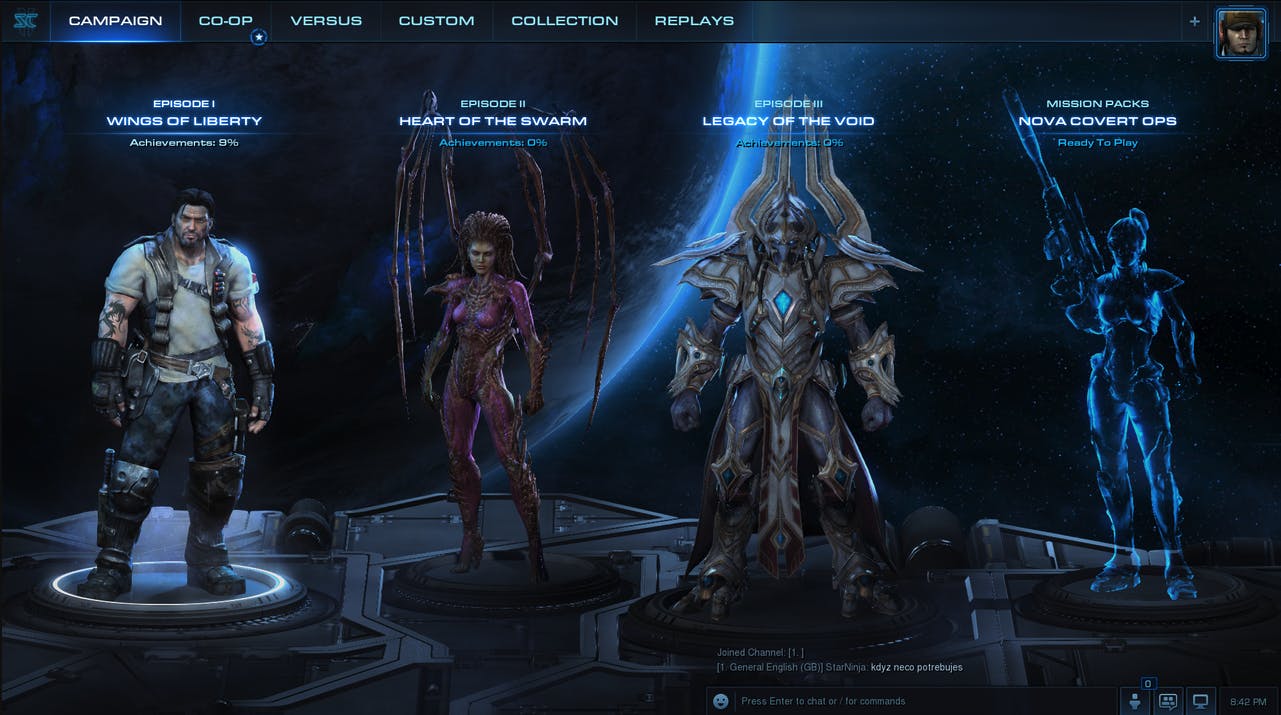
As team esports gained ground, other games and genres started saturating the space, and Blizzard could not keep up with the market trends. Other genres started saturating the space: FPS games like Counter-Strike and Call of Duty drew lots of fans, while MOBAs like Dota (which Blizzard’s own Warcraft basically gave birth to) and League of Legends offered a rather familiar experience to RTS fans, but were much more casual, social and fresh.
After the release of Dota 2, it’s safe to say that both Warcraft and Starcraft had been slowly declining till they reached a certain point, when the core fan base would no longer shrink. Starcraft II is still quite popular to this day, but Warcraft 3 basically became abandonware for many years.
Current state, competitions, numbers:
The two most popular RTS games with a decent player count in 2023 are Age of Empires II (remastered) and Starcraft II, with an honorable mention of Warcraft 3.
Blizzard offers no data reports on player activity officially, but there are 3rd party sites that track it, and the total number of players active per season is approximately 300,000, while the number of daily online active players is estimated at 20,000-40,000. That being said, it won’t take but a few moments to find a ladder game in Starcraft II.
The competitive scene of SC2 is past its prime: the 3 tournaments by prize pool were the WCS finals 2017, 2018 and 2019 with $700,000 each. ESL Pro Tour Championship’s prize fund is $500,000. It’s the biggest tournament circuit that has integrated DreamHack and even GSL (in season 2022/23) over the years.
StarCraft II
$38,983,830.66
6866 Tournaments
StarCraft: Brood War
$7,528,872.36
531 Tournaments
StarCraft: Remastered
$2,090,111.94
271 Tournaments
The second biggest RTS game is Age of Empires, and its player base is split between AoE 4 and 2 (definitive edition), of which the latter is the more popular one. The competitive esports scene is quite active, although it’s still a few times smaller than that of SC2. The list of the largest tournaments (tracked by esportsearnings, updated on March 1, 2023) looks this way:
Warcraft III is a game that defied all odds: it slowly became irrelevant by 2011, received absolutely 0 updates from their developer in 2011-2015, and not only its competitive scene nearly ceased to exist, but its online player base nearly evaporated too.
The release of WC3 : Reforged in 2020 was eagerly anticipated by all the fans of Blizzard games, not just RTS fans, and it turned into a disaster of Biblical proportions. The game was outsourced to an inexperienced 3rd party developer, it was released incomplete, bug-ridden to the point when it was unplayable, and, what’s worse, legacy Wc3 copies also got patched automatically. Essentially, Activision-Blizzard destroyed a perfectly working, albeit old, game, and replaced it with a broken game which didn’t even have some features of the original from 2002: a working profile system, a ladder system, a chat system or a clan system!
It is through hard work and dedication of the game’s community that it survived: enthusiasts had to release their own ladder, which had to be installed over the game, and had its own servers (because the game’s servers by Blizzard provided unplayable experience for people in many countries and regions where Warcraft is popular). In 2023 the game has a small, but friendly and active community, and it’s possible to find quality games pretty much instantly on the ladder. Warcraft III streams happen regularly and viewership numbers peak at 10k during the biggest events.
WarCraft III
$6,274,982.78
1516 Tournaments
WarCraft III: Reforged
$1,524,352.34
402 Tournaments
What does the future hold for RTS games?
Innovation is the thing that the genre lacks the most. While MOBA and FPS games embraced the new Game-as-a-Service model to retain and grow their player base, while monetizing their games and updating them with new content, RTS games failed to do so. Only Starcraft II developers managed to grasp this concept and introduced some faction skins, some other cosmetic items, as well as regular content updates, such as co-op campaigns and missions for the more casual players.
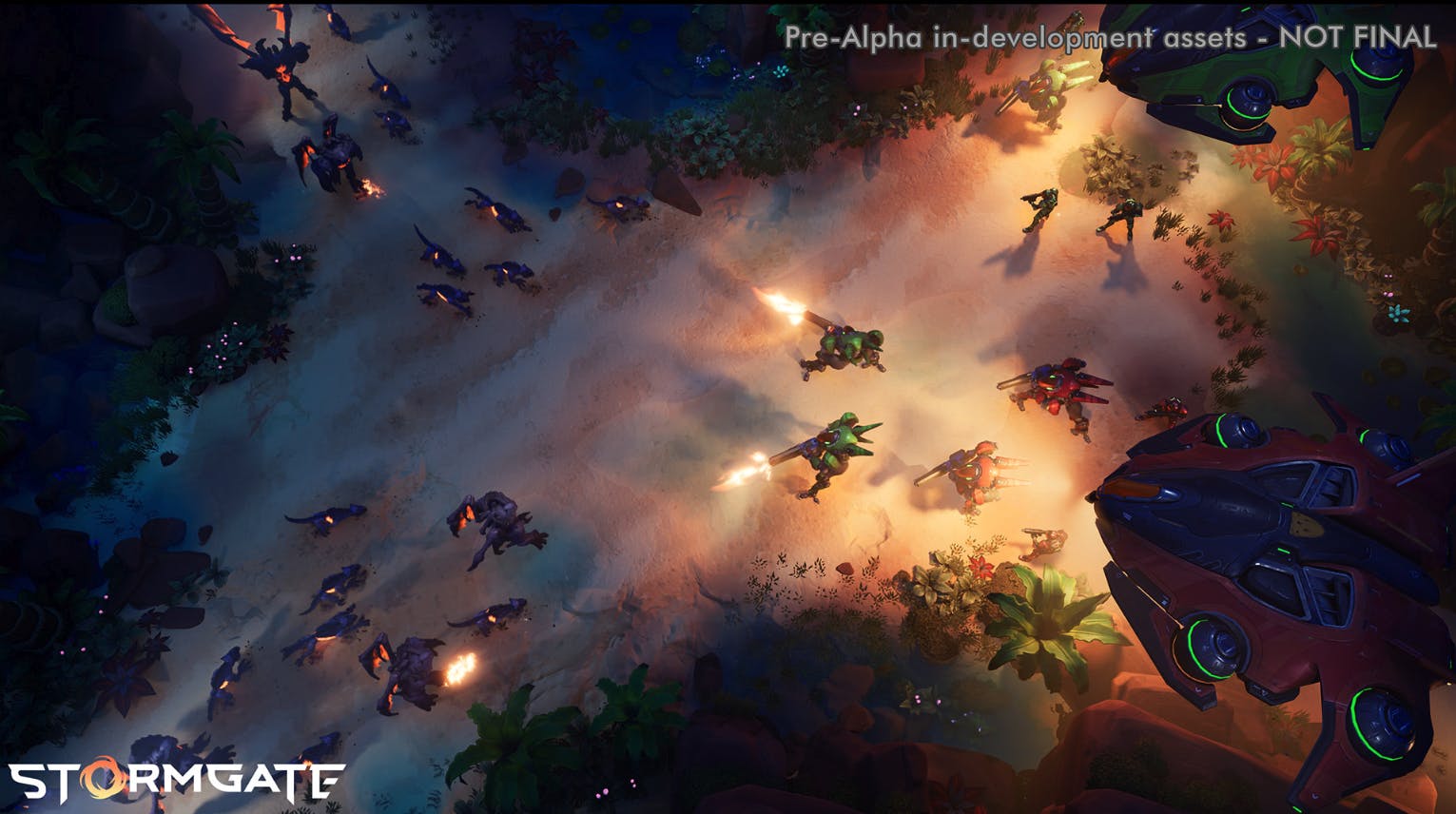
There is a chance that in the near future the tide will turn again for the RTS genre, as a group of ex-Blizzard developers formed Frost Giant studios and announced Stormgate. It’s marketed as a spiritual successor of the old Blizzard games, somewhere in between Starcraft and Warcraft, and it will also implement a lot of features that players expect a modern competitive game to have. It will focus equally on singleplayer, casual play, and competitive modes (both 1v1 and 3v3).
This upcoming release, the sustained success of SC2, Warcraft 3 with its dedicated community and the recent popularity spike of AoE2/4 – it all means that Real-time Strategies could make a really great comeback, provided that they keep up with the times and manage to retain both their original player base, which is more conservative and older, and attract some fresh players, who are more used to MOBAs and FPS games, as well as prefer different platforms.
Conclusion - pros and cons of playing RTS in 2023
RTS is a unique and fun genre, and this can be said about competitive RTS games too. Here are some distinctive properties of the genre that are common for every modern RTS:
(+) RTS games are “smart”, they promote tactical thinking more than games in more modern genres. It’s no coincidence that many Warcraft 3 players switched to Poker and found great success there.
(+) RTS games provide a decent amount of variety, and room for self-expression through strategy.
(+) RTS games can vary in pace and complexity. Even those games that require great mechanical skills do not rely on the “raw” reflexes, which are said to be important in CS:GO and Dota, and which decline with age. RTS is more about composure, experience, practice and intelligence.
(?) It’s a known fact that the average age of an RTS player is higher than in any other competitive game genre. It’s not as noticeable on the pro esports scene, although a top-5 Warcraft player, Jang Jae-Ho “Moon” is 35 and he’s still active, but it’s true for the fan and regular player base.
(?) The way to improve your skill in RTS games is a bit different than in other genres: there’s a lot of emphasis on replay analysis (both your own and pro replays), and on learning from your own mistakes.
(?) While there are different modes in all RTS games, 1v1 is the only one used in any competitive events these days, so it’d a solo game, where your success and failure are in your hands. Finding a group of players, like a team/clan, will also be rather difficult and you may feel a little isolated at first.
(-) The only free-to-play major RTS game is SC2. This is quite unusual, since Dota, League of Legends, CS:GO, Valorant and other major competitive titles are free-to-play games.
(-) RTS have somewhat fallen out of favour with both the esports public and the casual players.
Things can turn around for RTS games: the Starcraft esports is still rather active, and it’s not likely to be dropped by ESL, Warcraft 3 has defied all odds and is experiencing a renaissance of organic growth. All of this is happening while the RTS community is waiting for Stormgate, which can, if launched properly, reignite mainstream interest in this genre at least for a few years, and then there’s no telling how far it can go.
